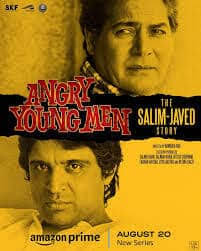From Masala to Murk
Indian film coupled with its bright colours, music and drama, had changed completely. Buried beneath the shiny surface of Bollywood’s stock stories is a dark, urban genre which we have come to understand as Indian film noir. This evolution of storytelling indicates a lean towards crime, moral grey and the underbelly of this world, and presents a raw and gritty depiction of modern India, allowing viewers a darker lens to the world we know.
What Is Film Noir? A Global Perspective
A product of 1940s Hollywood, film noir is defined by its cynical tough guys, dark lighting and morally murky themes. These are usually darker films with anti-heroes, femme fatales and layered storylines. Although a product of American cinema, the noir sensibility has reached across borders, affecting other filmmakers around the world, even in India. (What we still do in the shadows: why film noir will never die)
The Birth of Indian Noir: Early Experiments
Andha Naal (1954): A Tamil Trailblazer
Indian noir was pioneered early on by the Tamil film Andha Naal (1954). A songless thriller directed by S. Balachander that strayed from the musical mold of classical Indian cinema, Zero was a murder investigation set against the backdrop of World War II. The film’s use of chiaroscuro lighting and it’s non-linear narrative style were radical for the time and became defining elements of later Indian noir cinema. (Andha Naal)
The Rise of Mumbai Noir: Satya and Beyond
Satya (1998): Defining a Genre
Ram Gopal Varma’s Satya is often credited with pioneering the “Mumbai noir” genre. The film offers a gritty, realistic portrayal of Mumbai’s underworld, focusing on the life of an immigrant who becomes entangled in the city’s criminal activities. Its success not only redefined gangster films in India but also influenced a generation of filmmakers, including Anurag Kashyap . (Satya (1998 film))
Anurag Kashyap: The Torchbearer
Anurag Kashyap has been instrumental in advancing Indian noir. His films, such as Black Friday (2004), No Smoking (2007), and Gangs of Wasseypur (2012), delve deep into themes of crime, corruption, and societal decay. Kashyap’s storytelling is marked by non-linear narratives, complex characters, and a stark portrayal of reality, solidifying his role as a key figure in the evolution of Indian noir.
Themes and Aesthetics: What Defines Indian Noir?
Urban Decay and Moral Ambiguity
Indian noir often centers around urban settings plagued by crime, corruption, and moral ambiguity. Films like Sacred Games (2018) and Paatal Lok (2020) explore the dark underbelly of cities like Mumbai and Delhi, highlighting the complexities of modern Indian society . (Bombay Noir)
Visual Style: Shadows and Light
The visual aesthetics of Indian noir borrow heavily from classic noir elements—high-contrast lighting, shadowy environments, and a muted color palette. These stylistic choices enhance the mood of despair and tension, immersing viewers in the characters’ troubled worlds.
The Role of Women: Femme Fatales and Beyond
While traditional noir often features the archetype of the femme fatale, Indian noir has expanded the roles of women, portraying them as complex characters navigating a patriarchal society. Films like Kahaani (2012) and NH10 (2015) showcase strong female protagonists who confront and challenge the corrupt systems around them .
The Digital Age: Web Series and Streaming Platforms
The advent of digital platforms has provided a new avenue for Indian noir to flourish. Web series such as Delhi Crime (2019) and Mirzapur (2018) delve into crime and moral complexity, reaching wider audiences and pushing the boundaries of traditional storytelling. These platforms allow for more nuanced narratives, free from the constraints of mainstream cinema.
The Future of Indian Noir
Indian noir has carved a niche within the country’s cinematic landscape, offering a stark contrast to the traditional Bollywood formula. As filmmakers continue to explore the darker facets of society, the genre is poised for further growth and innovation. With the support of digital platforms and an audience eager for complex narratives, Indian noir stands as a testament to the industry’s evolving storytelling prowess.
Frequently Asked Questions (FAQ)
Q1: What is Indian film noir?
A1: Indian film noir is a genre that incorporates elements of classic film noir—such as moral ambiguity, crime, and complex characters—within the context of Indian society and cinema.
Q2: How does Indian noir differ from traditional Bollywood films?
A2: Unlike traditional Bollywood films, which often feature musical numbers and melodrama, Indian noir focuses on gritty, realistic narratives that explore the darker aspects of society.
Q3: Who are some prominent filmmakers in the Indian noir genre?
A3: Notable filmmakers include Ram Gopal Varma (Satya), Anurag Kashyap (Gangs of Wasseypur), and Sujoy Ghosh (Kahaani), among others. (Satya (1998 film))
Q4: What are some must-watch Indian noir films?
A4: Key films in the genre include Andha Naal (1954), Satya (1998), Black Friday (2004), Gangs of Wasseypur (2012), and Kahaani (2012). (Andha Naal)
Q5: Where can I watch Indian noir content?
A5: Many Indian noir films and series are available on streaming platforms like Netflix, Amazon Prime Video, and Disney+ Hotstar.